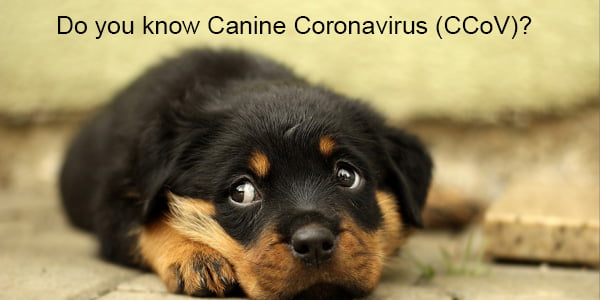Etiology and Epidemiology
Canine coronavirus (CCoV) is a single-stranded positive-stranded RNA virus belonging to the family Coronaviridae, with 6-7 polypeptides. The diameter of the virion is 60-200nm, the surface has an envelope, and the nucleocapsid is filamentous helix symmetry. The surface of the virus has coronavirus-specific protrusions that look like a crown.
Canine coronaviruses are less resistant to the environment and can be inactivated by UV light. In addition to UV light, canine coronaviruses are sensitive to lipid solvents, formaldehyde and oxidizing agents, and are stable in acidic environments. In addition, the virus can be stored for several years at -70°C, but it has poor thermal stability and is easily inactivated at high temperatures.
Sick dogs and virus-carrying dogs are the main sources of infection of canine coronavirus. Sick dogs can transmit the virus through the respiratory tract, digestive tract, feces and secretions. The disease is widespread and contagious to most canines. Dogs of all ages, breeds and genders can be infected. Among them, puppies are the main susceptible population of canine coronavirus disease, and the mortality rate is high after infection. Canine coronaviruses can be spread by:
1. Direct contact between dog and dog.
2. Aerosolized and inhaled respiratory secretions.
3. Use the same food bowl, toy, kennel, etc. to have indirect contact with a dog carrying the virus.
4. The virus is passed on to the puppies through the placenta from the pregnant dog.
Pathogenic mechanism
After 2 days of oral exposure to susceptible dogs, the virus reaches the upper duodenum and mainly affects the digestion and absorption cells of the villi of the small intestine. The virus enters enterocytes between the microvilli by pinocytosis and buds on the smooth membrane of cytoplasmic vacuoles.
Due to the rupture of the cell membrane, the virus enters the intestinal lumen with the shed infected cells. It then infects the villous epithelial cells of the entire intestinal segment of the small intestine, resulting in short and thick villi, loss of digestive enzymes and intestinal absorption, and diarrhea.
Later, with the recovery of the structure of the small intestine, the clinical symptoms disappeared, the detoxification was reduced and terminated, and neutralizing antibodies were produced in the serum.

